- Flat 2, "Merill Court "Fuxa Street 1308 San Ġwann, Malta
Aviation is an exciting field, but it’s not just limited to pilots and stewardesses. To ensure safe flights, there’s a team of maintenance professionals who play a crucial role in guaranteeing the safety and reliability of aircraft. Today we invite you to join us in exploring the different professions involved in aviation maintenance and discovering opportunities for a career in aviation. From aviation maintenance careers to the aircraft maintenance profession, there are various paths to consider within the aviation industry careers. Whether it’s aerospace maintenance jobs or aviation technician careers, the aviation maintenance workforce offers diverse and rewarding aviation maintenance jobs.
1. Aircraft Maintenance Technician
Aircraft Maintenance Technicians are certified to EASA Part 66, category B1 (Mechanics) or B2 (Avionics). Their main mission is to carry out preventive and corrective maintenance and diagnostics on aircraft. In the event of a problem, they also carry out repairs and replace defective parts. Their goal is to keep aircraft and helicopters working efficiently. These professionals are often required to work as part of a team, collaborating with other aviation professionals such as engineers, air traffic controllers and pilots.
2. Aircraft Maintenance Engineer
Aircraft Maintenance Engineers design and supervise maintenance operations. They play a vital role in ensuring compliance with safety standards. They hold an EASA Part 66 license, category B1.1 (Mechanical) or B2.1 (Avionics). In addition to their technical skills, aircraft maintenance engineers must also have project management skills. For complex technical problems, maintenance engineers are responsible for analyzing the issues and proposing corrective solutions.
3. Aeronautical Electrician
Specializing in aircraft electrical systems, Aeronautical Electricians hold an EASA Part 66, Category B2 (Avionics) license. Specialized in the installation, maintenance and repair of electrical and electronic systems, their expertise is essential in the maintenance of electrical components. These experts are responsible for numerous electrical components, such as cables, electrical distribution panels and generators. This profession requires them to keep constantly informed about new advances. Aeronautical electricians generally work in collaboration with maintenance technicians, engineers and avionics specialists.
4. Airframe Mechanic
Airframe mechanics are the guardians of the external structure of aircraft, often referred to as “airframes”. Their mission is to ensure the safety and reliability of aircraft. Licensed under EASA Part 66, category B1 (Mechanical), they ensure that the hull, wings and control surfaces remain in perfect condition. Their work encompasses a range of activities, from visual inspection to damage detection, repair or replacement of components. They also keep precise track of the aircraft’s maintenance history.
5. Aircraft Engine Mechanic
Specializing in aircraft engines, Aircraft Engine Mechanics hold an EASA Part 66, category B1 (Mechanical) license with an engine type rating. Their role is to inspect, repair and replace engine parts. By carrying out engine tests, he or she can prevent breakdowns and incidents involving the aircraft’s engine. These experts possess a profound understanding of the complex mechanisms that power aircraft. In addition to their hands-on expertise, these professionals often collaborate closely with engineers and other maintenance personnel to implement innovative solutions and optimize engine performance.
6. Avionics Technician
Avionics Technicians hold an EASA Part 66, category B2 (Avionics) license. Their expertise is essential for maintaining avionics systems, including flight instruments, communications and navigation systems. Avionics technicians perform a wide range of tasks, including system diagnostics, troubleshooting and component replacement. In a sector where technological advances play a major role, avionics technicians remain at the cutting edge of innovation, constantly adapting to new technologies and changing regulatory requirements.
7. Aircraft Maintenance Inspector
Their essential role is to carry out regular inspections to ensure quality and compliance with safety standards. They hold a Category B1 or B2 EASA Part 66 license, with additional qualifications. Conducting regular inspections and audits, Aircraft Maintenance Inspectors meticulously assess the airworthiness of aircraft and the competency of maintenance procedures. In addition to their regulatory oversight duties, Aircraft Maintenance Inspectors often collaborate closely with maintenance personnel, providing guidance and expertise to facilitate continuous improvement initiatives. Through their proactive approach and unwavering commitment to excellence, they play a pivotal role in fostering a culture of safety and accountability within the aviation industry.
Conclusion
Aviation maintenance offers a diverse range of exciting careers. Whether you’re passionate about mechanics, electronics or quality management, there’s a challenging career out there to help keep aircraft flying safely and efficiently. To turn your aspirations into reality and get your aviation career off the ground, we invite you to join our specialized online courses for EASA B1 and B2 certification. These courses will provide you with the skills you need to excel in the industry. Enroll today to take flight towards a rewarding career in the exciting world of aviation maintenance.
FAQ
What is EASA B1/B2 certification?
EASA (European Aviation Safety Agency) B1/B2 certification is an aircraft maintenance certification that enables a qualified technician to work on aircraft and issue airworthiness certificates under European regulations.
What is the difference between B1 and B2 certification?
B1 certification is for maintenance technicians who carry out maintenance tasks on the airframe and its mechanical, electrical and avionics systems. B2 certification is for those working on avionics systems.
Where to study for EASA B1/B2 certification
Our online training program for EASA B1/B2 licenses offers exceptional flexibility to students, enabling them to study at their own pace, wherever they are in the world. If you are a working aviation professional, our online training offers you the opportunity to balance your professional and personal commitments while progressing towards your EASA B1/B2 licenses.
Is online training available for these certifications, and how can 360 Aviation Life support my learning journey?
Absolutely! 360 Aviation Life offers comprehensive online courses, providing flexibility and expert guidance for your EASA B1, B2, and FAA-A&P certification preparation.



